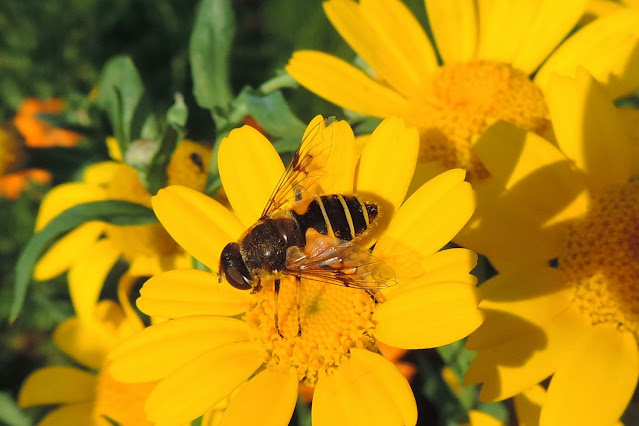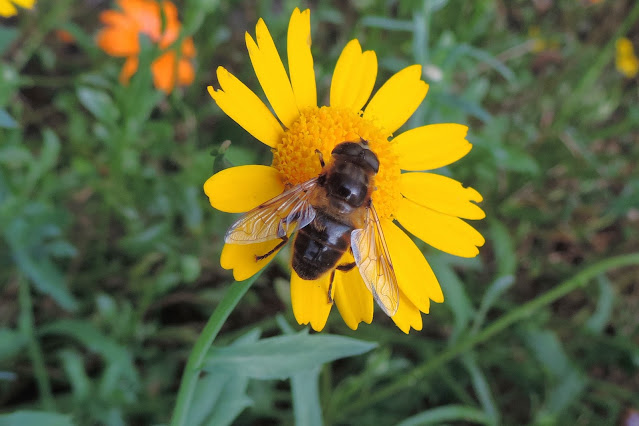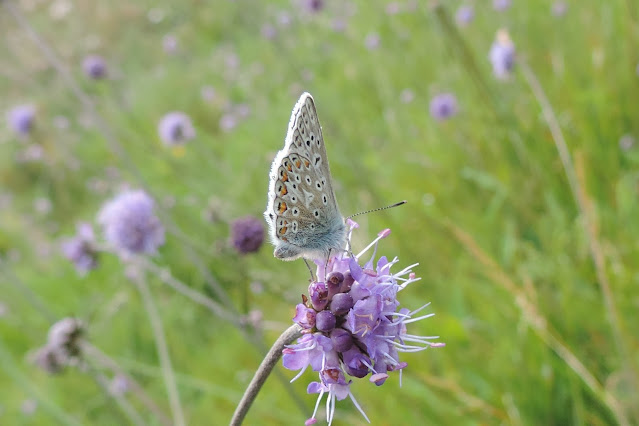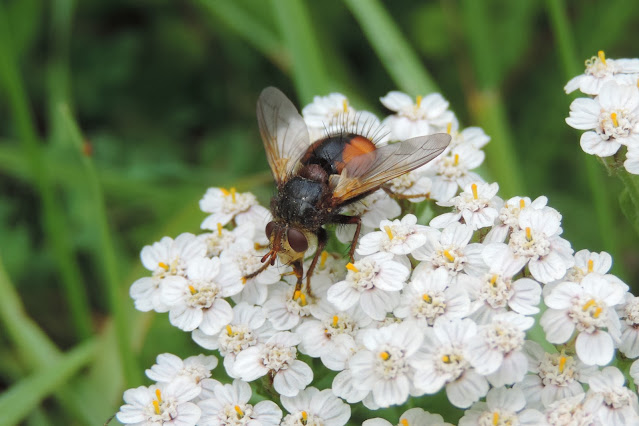A bit of sunshine Saturday morning meant a quick walk before the rugby. The Japanese Knotweed has gone over followed closely by Devilsbit Scabious. That leaves just Michaelmas Daisy and Ivy for the hoverflies to feed on, so wasn't expecting much. But a newly discovered Ivy patch in a sun trap attracted a lot of hoverflies. The star of the show was my third ever Xanthandrus comtus a scarce migrant from Europe, Couldn't quite get the killer shot but I'm satisfied with the the following three.
Eighteen species in total is not bad for late September. Finally new for the year was Helophilus trivittatus plus the other Helophilus. Also seen were Rhingia rostrata, Didea fasciata and sixteen Sericomyia silentis. The most numerous species was Eristalis tenax (70).
Eupeodes luniger
Helophilus pendulus
Helophilus trivittatus
Serocmyia silentis
Syrphus ribesii
On the insect front Silver Y moth and Red Admiral butterflies were still numerous and 2 Comma butterfly were feeding on Ivy and Devilsbit Scabious. Green Shieldbug, Southern Hawker Dragonfly, Common Darter and the tachinid fly Tachina fera were the supporting cast.
Comma
Green Shieldbug
The only bird of note was a calling Chiffchaff. Late news from Friday was a American Cliff Swallow found by Neil Donaghy at Sker briefly, was said to be flying inland, so I thought I would chance my arm before work and drive up Mynydd Ty Talwyn to see if it would pass by. When I arrived at the big green field there were 200+ Barn Swallow feeding low over the hay bales. I scanned them for quite a while but try as I might I couldn't locate a Cliff Swallow. Two Red Kite were also present. A large fall of American birds including Canada, Magnolia and Bay-breasted Warbler. Alder Flycatcher and Bobolink has occured in Pembrokeshire, but I didn't have time to visit there sadly and now the weather is about to turn crap again :( .








.JPG)

.JPG)






































